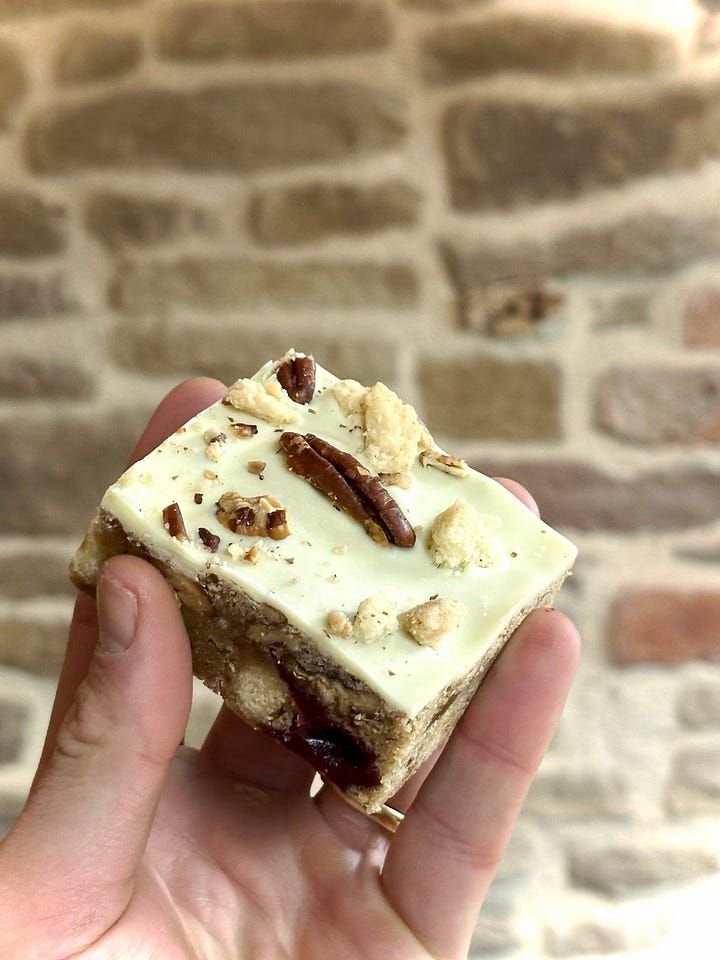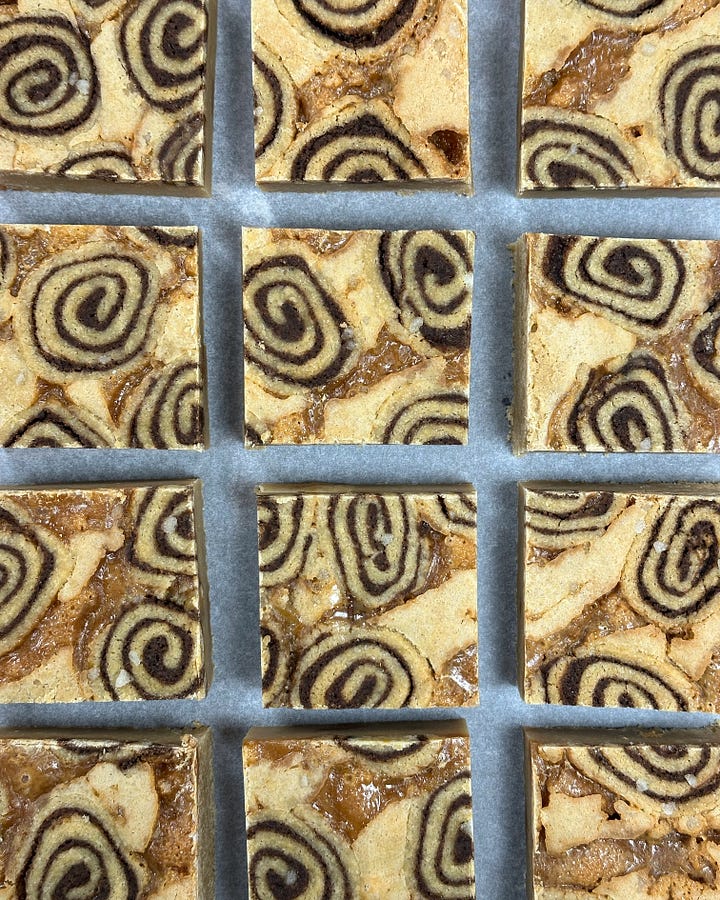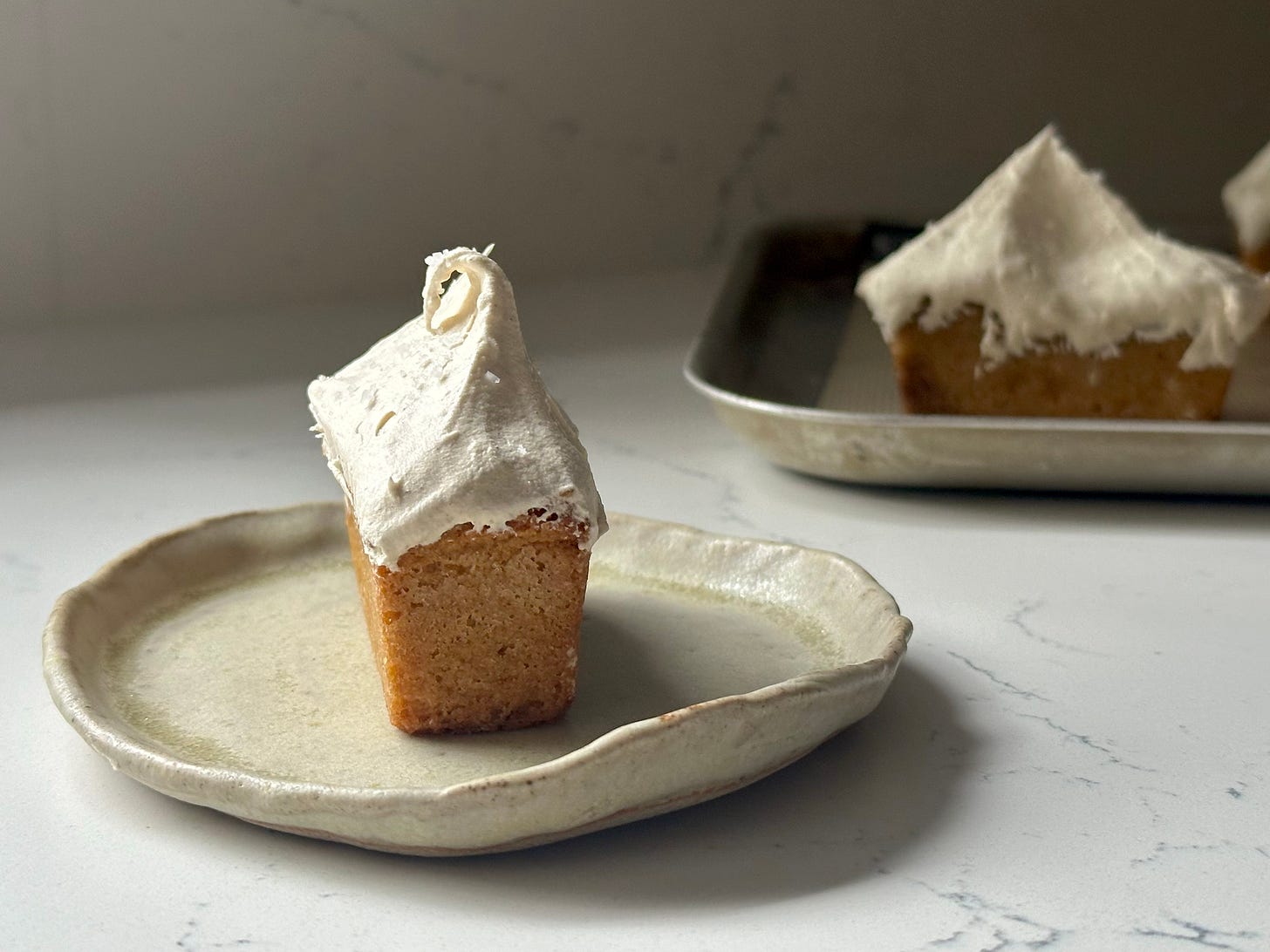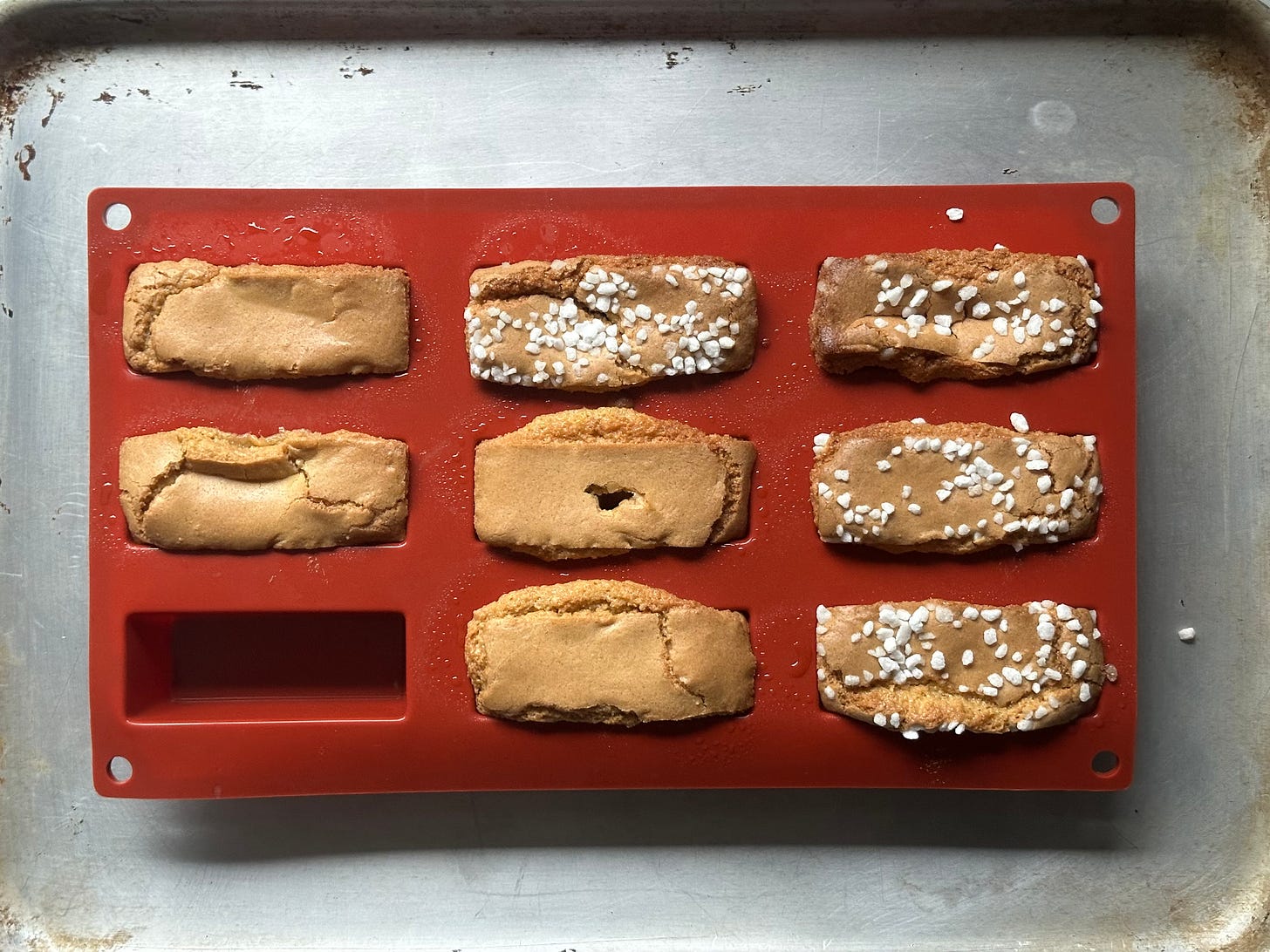Hello there dear reader.
Apologies this week’s newsletter is a day late. If you follow me on Instagram, you might have seen that I haven’t stopped recipe testing for my online brownie company, Ruff Puff Brownies (launching soon, I promise!). It’s been a delicious endeavour, let me tell you, but I feel my blood glucose levels are now beyond turbulent. I’ll be glad when I’ve finally nailed down the final couple of recipes and it becomes more of a production line (one that is still with heart, of course!).
The flavours I’ve created so far, I am very proud of. The Sticky Scandi is a firm favourite. It’s a brown-butter blondie batter (all our blondies are brown-butter) topped with salted caramel pools and slices of cinnamon swirl biscuits – all homemade. While I love the popular flavours of Kinder Bueno, Nutella and Biscoff, they’re all made by so many other folk (very well, I hasten to add), and so I wanted to bring something a little different to the table. I want to produce brownies and blondies for which all the inclusions and toppings are made in our own kitchen. The American Fling blondie is also at the top of my list. It’s crammed with roasted pecans and a sour cherry gel (made with agar agar, not gelatine), topped with a white chocolate ganache. Heaven.


Anyway, back to this week’s recipe. This is something I’ve wanted to develop since I got back from New York. When on my manic pursuit of the perfect brownie (spoiler alert, it doesn’t seem to exist on Manhattan) I trundled to Brooklyn to try the much-loved Radio Bakery. They didn’t sell brownies, but they did sell the most incredible brown butter corn cakes. They were something of a cross between blondies, cookies and financiers, but made with sunny yellow cornmeal (polenta). They were tender, gooey and so unbelievably chewy - one of the best things I ate on the trip.
Perfecting this recipe took a while (stressful, when in the middle of launching a new business venture), but when I nailed it, I couldn’t believe how delicious they turned out. So good, that I instantly decided to put them on the menu for my spring/summer 2024 afternoon tea class at my baking school, Barn Kitchen. But that required them to be elevated in their aesthetic – as delicious as they are, without an icing they just resemble little yellow bricks (not now, Dorothy!). As you’ll see from the below photograph, I did sprinkle pearl sugar onto half of them before baking, which would be an easy alternative to the buttercream if that’s the way you want it.
Because they’re already sweet and chewy, I didn’t want to obliterate that with an even sweeter icing sugar glaze, and an American-style buttercream would just render them sickly. So, I decided on a brown-butter Italian meringue buttercream, which is richer but far less sweet than the former. To marry with the delicate corn flavour, I used honey I the sugar syrup to make the meringue, and I’m bloody glad that I did.
Meringue buttercream
Split mixture
Whenever you make a buttercream with a meringue base (whether Swiss meringue – where the egg whites and sugar are heated over a pan of simmering water - or as is the case here, Italian – where a hot sugar syrup is poured into egg whites) there’s a chance the mixture will split – in fact, it’s a certainty. When you’re throwing cubes of butter (fat) into a meringue (protein), it’s difficult for them to emulsify unless they’re precisely the same temperature and one is added to the other very slowly – think mayonnaise. The best thing to do is apply a little heat if the mixture will not emulsify once all the butter has been added and it’s been whipped for at least 2 minutes. I find the most convenient way, what with my mixer bowl being locked onto the KitchenAid, is to gently run the flame of my chef’s blowtorch around the outside of the bowl in 20-30 second bursts, while the mixer is running on full speed. The gentle heat will emulsify the mixture. If it gets too warm and runny, just let it cool down (while being whisked) and then refrigerate for 15 minutes or so.
Measuring the temperature of the syrup
To make an Italian meringue buttercream, an instant-read digital thermometer is essential. The syrup has to reach what is called ‘soft-firm ball’ stage – so called because if a little is dropped into a bowl of ice water, it forms a soft, squidgy ball. This is a precise temperature range between 112C and 120C, and measuring it exactly is a must.
How long will the buttercream keep
The buttercream can be stored in a Tupperware container in the fridge for up to a week, or frozen for 3 months. Defrost it overnight in the fridge and give it a good beat to fluff it up again – if it splits, warm it up using the method above.
Brown Butter Corn Cakes - makes 8
For the cakes
90g unsalted butter
55g caster sugar
Keep reading with a 7-day free trial
Subscribe to Recipes & Ramblings to keep reading this post and get 7 days of free access to the full post archives.




